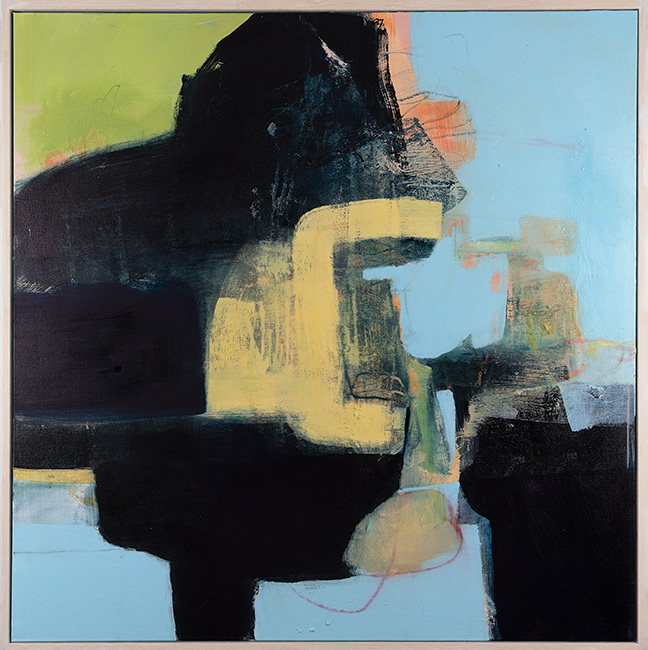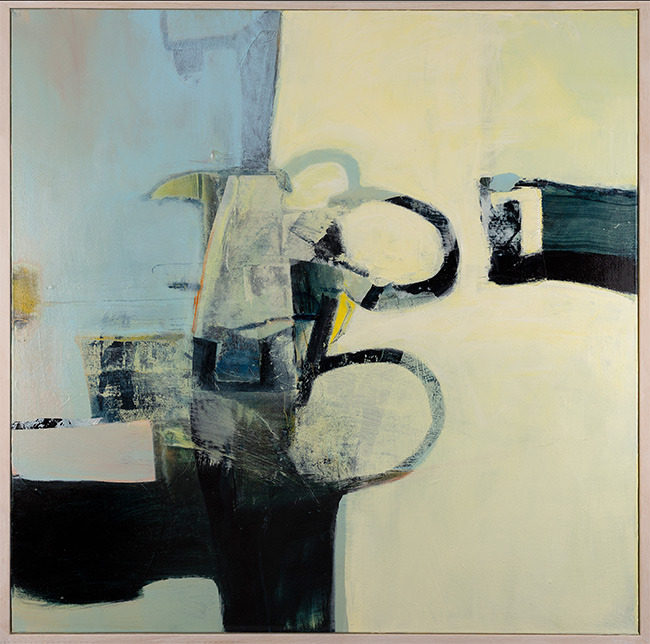
Annie Luke Turner
British contemporary artistOriginal mixed media paintings
(b.1966) Manchester, England
Born from the memories and emotions evoked by place and space, the work of Annie Luke Turner is charged, considered and deeply moving. Taking and translating the pulse of her surroundings with reverence and vision, Annie creates work that serves as sacred emotional touchstones of the landscape, each with their own story to tell.
Annie’s fascination with the landscape and its history began in early childhood. Happy and wild childhood holidays were spent camping in Wales and Scotland with her parents. Fostering a spirit of wonder and exploration in her children, Annie’s mother, also fascinated with the stories of the landscape, searched with Annie and her brother for every trace of ancient monument. Clearly a family trait, Annie’s Great Uncle, archaeologist Leslie Peter Wenham, was responsible for many of the major excavations of York in the 50s, 60s and 70s. To this day, archaeology remains a strong feature of Annie’s work, seen in the layers and marks, the traces of what was once visible but which now lies beneath the surface.
Educated in the 70s, Annie struggled with reading and writing and was not considered 'academic'. As an adult, she later learned that this was down to her undiagnosed dyslexia. Now regarding it as a strength, this alternative way of learning allows Annie to harness her vivid imagination and creative perception. This, combined with her deep love of nature and exploration, manifests in her work.
Annie’s way of working is both intuitive and responsive. After walks, drives and journeys, Annie’s work begins to evolve from a feeling for a place; it might be the light, shapes, colours or simply the sense of what may have happened there before. She is also drawn to understanding and investigating the history of a place. She spends time sketching in situ, often quite figuratively but sometimes with eyes closed, using the memory of a place to guide the pen. These sketches might sit for months, or they might go straight into the studio, sometimes onto paper, sometimes canvas. There’s no set plan.
What usually happens next is a process of mark-making. Often barefoot with eyes closed, Annie brings back the feeling of the place and focuses on her emotional response more than an attempt to draw—though sometimes the drawing comes instinctively. Sometimes other places arise, shapes and features that become clear but were never consciously placed. These might be lines or shapes scratched into the canvas, drawn or painted with sticks. Parts of other paintings might be torn out of others and moulded in. Sometimes they disappear forever. Then colour, sometimes thick and textural, other times just a translucent surface, sometimes scraped off entirely.
This process can take weeks and months. Paint applied and removed, marks made and hidden then scraped back and revealed. And then one day, the painting says done.
Today, Annie splits her time between the Lake District and her small studio in the post-industrial port of Hull, responding to the contrasting landscapes found in both rural and urban environments. Her work continues to evolve, captivating new audiences and ever growing in popularity with contemporary collectors, her most notable to date none other than Johnny Marr. Impactful and meditative in equal measure, her work makes a standout addition to any collection.
Available Artworks

A Selection of Sold Artworks
If you have purchased an artwork displayed below and would prefer the listing to be permanently removed, please feel free to contact us by email or telephone.
